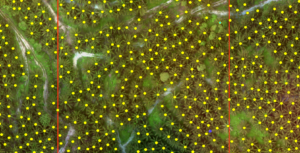Oil palm inventory refers to the assessment and management of oil palm plantations, which are cultivated primarily for the production of palm oil. It involves keeping track of various aspects related to the oil palm trees, such as their age, health, yield, and other relevant data.
Key components of oil palm inventory may include:
- Tree Age Distribution: Monitoring the age distribution of oil palm trees within a plantation is crucial for planning harvesting schedules and estimating future yields. Younger trees typically produce less fruit, while mature trees yield more.
- Tree Health Assessment: Regular inspections are conducted to assess the health of oil palm trees, identifying any signs of disease, pest infestations, or nutrient deficiencies. Prompt action is taken to address any issues to maintain optimal productivity.
- Yield Estimation: Estimating the potential yield of oil palm trees involves analyzing various factors such as tree age, environmental conditions, and historical production data. This information helps in forecasting future production levels and planning for processing and marketing activities.
- Land Use Planning: Oil palm inventory also involves monitoring land use within plantations, including the allocation of areas for planting, conservation, and infrastructure development. This ensures efficient utilization of available land resources while adhering to environmental regulations.
- Data Management: Accurate record-keeping of inventory data is essential for effective plantation management. This includes maintaining databases of tree information, historical yield data, and other relevant metrics to support decision-making processes.
- Sustainability Assessment: Assessing the sustainability of oil palm plantations involves evaluating environmental, social, and economic factors. This includes monitoring biodiversity, water usage, carbon emissions, labor practices, and community engagement initiatives.
An example of the tree count process using ArcGIS software
Overall, oil palm inventory plays a crucial role in optimizing the productivity and sustainability of oil palm plantations, ensuring efficient resource utilization and responsible management practices.
Ready to revolutionize your oil palm plantation management? Contact MySpatial today; +60133565626 or [email protected] to learn how oil palm inventory can empower you with actionable insights, cost savings, and improved sustainability. We are digital mapping experts ready to help you manage your oil palm plantation!

